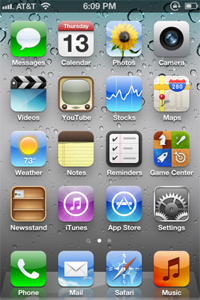<< View More Posts
Pushover Turns 10
Hi, I’m joshua stein, the proprietor of Pushover. 10 years ago this week, I officially launched the Pushover app on the Apple App Store and Google Play (back then called Android Market) and since then, support for Pushover’s API has been integrated into countless services, products, open-source libraries, and one-off shell scripts and tools. To date, Pushover has delivered over 3 billion notifications to over 3/4 of a million users.
Many users may not know it, but Pushover has always been a solo venture, being developed, run, and supported by just one person with no outside funding. What started as a side project to send alerts from my network monitoring script for my consulting services quickly grew into a full-time business. (Don’t worry, this is not about our Incredible Journey together.) So today, I just wanted to thank every Pushover user that has used the service in the past decade, whether you rely on it every day or whether you hated it and left it a 1-star review on the App Store. Pushover continues to thrive and evolve because of its users and the valuable feedback and encouragement I receive from you every day, and of course, because of other software developers that integrate Pushover into their projects. I continue to be fascinated by the creative uses people have come up with for Pushover.
10 Years of Pushover

In early 2012 when Pushover launched, the iPhone 4S and the Galaxy Nexus were the latest-and-greatest phones. iOS 5 had a very glossy appearance and Siri was just about as bad then as it is now.
Pushover was initially a paid app in the App Store and Android Market, but eventually became free-to-try with a one-time in-app purchase licensing that platform forever. Many of Pushover’s earliest users are still using it today after paying $4.99 ten years ago, and I hope those users will still be using it in 2032 on their iPhone 26.
The launch of Pushover for Teams in 2017 helped expand the reach of Pushover into larger companies and organizations that needed centralized management which in turn helped Pushover become more sustainable.
Pushover’s infrastructure has grown in size over the years and while it’s always run on dedicated bare-metal servers, they’ve moved around between network providers and across geographic locations. I’m proud of the service’s uptime which has always been fairly consistent over the years, although some DDoS attacks in 2019 forced Pushover to need an anti-DDoS proxying service. I greatly appreciate the support and understanding I receive from users when things get a little rocky.
The Push Notification Landscape
As iOS and Android have evolved over the past decade, Pushover has kept pace with their constantly updating notification mechanisms. New iOS functionality in 2015 allowed Pushover to support encryption for all push notifications between Pushover and each user’s device, and in 2018 I was able to add support for image attachments that could be rendered directly in the notification. In 2020, Pushover on iOS was granted a Critical Alert entitlement allowing high-priority notifications to bypass the device’s mute switch (if the user enabled it), something that’s been possible on Android since 2013. Last year, Pushover finally gained support for custom sounds on all three platforms after a recent iOS change made it possible, which was a constant feature request almost since the beginning of the service.
As was probably to be expected, push notifications as a concept have became a source of irritation and spam in recent years, with many apps and websites trying to use them to send marketing messages and nagging users for engagement (even from some of Apple’s own apps). While Pushover has a zero-tolerance policy for spam, it’s never been an issue for the service due to users having to opt-in to Pushover notifications by supplying their randomly-generated user key.
However, it’s clear that Apple and Google are taking a much more aggressive stance on annoying notifications lately, with new features like Do Not Disturb, Focus, and Time-Sensitive notifications. I’m confident Pushover will be able to adapt to new restrictions or other changes in future platform updates, and with any luck, the more annoying users of push notifications will not be and will have to stop abusing them.
Thanks
In closing, I just want to reiterate my thanks to everyone that has used Pushover and continues to advocate for it at their company, recommend it to a friend, or add support for it in their open-source project. I’m grateful that I’ve been able to operate this business for the past decade and I hope to be able to keep evolving Pushover over the years to come.
joshua stein
Owner of Pushover, LLC